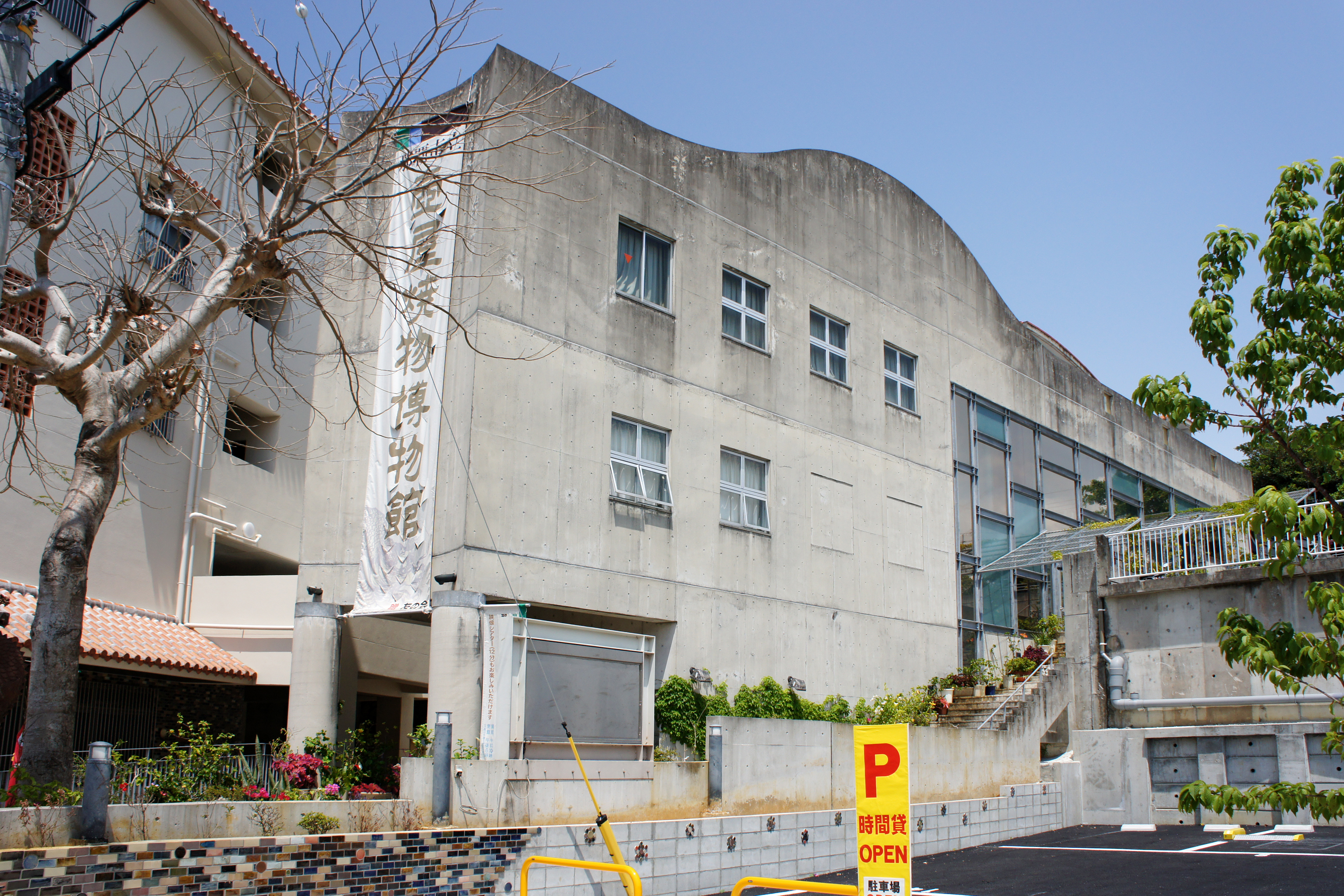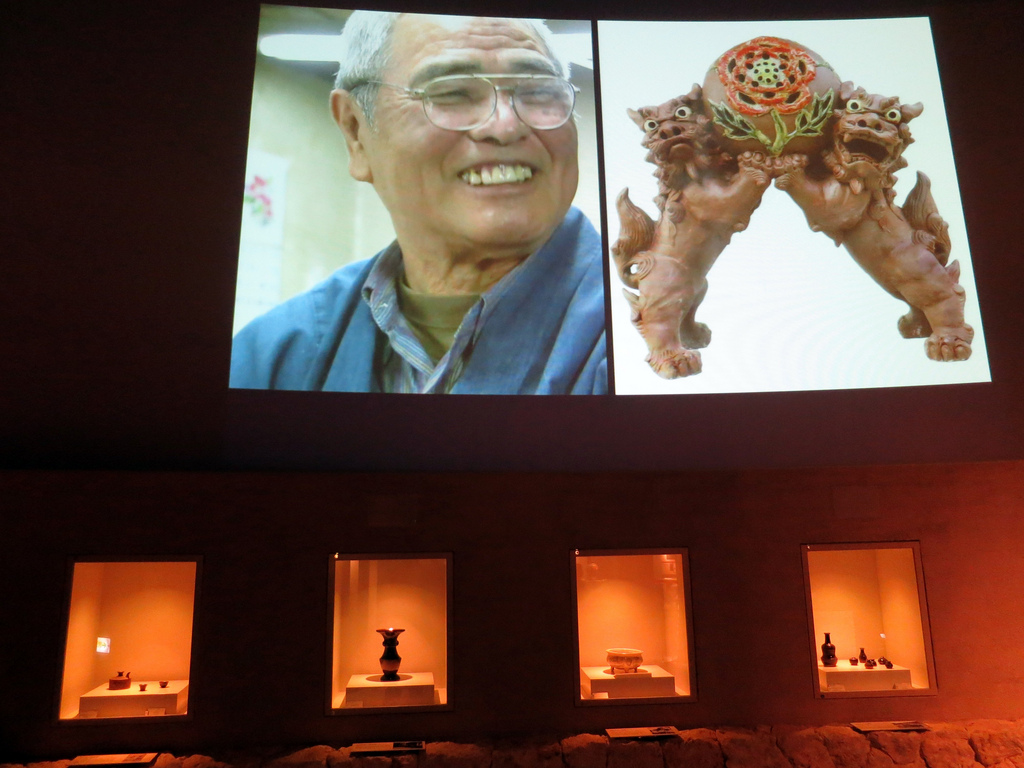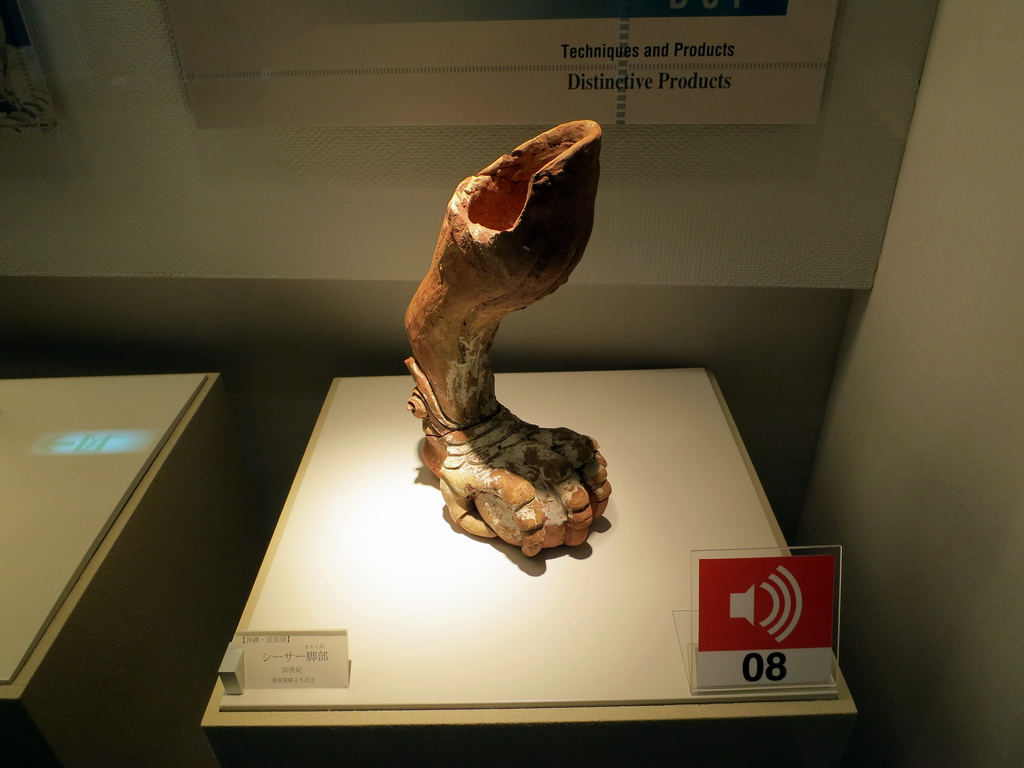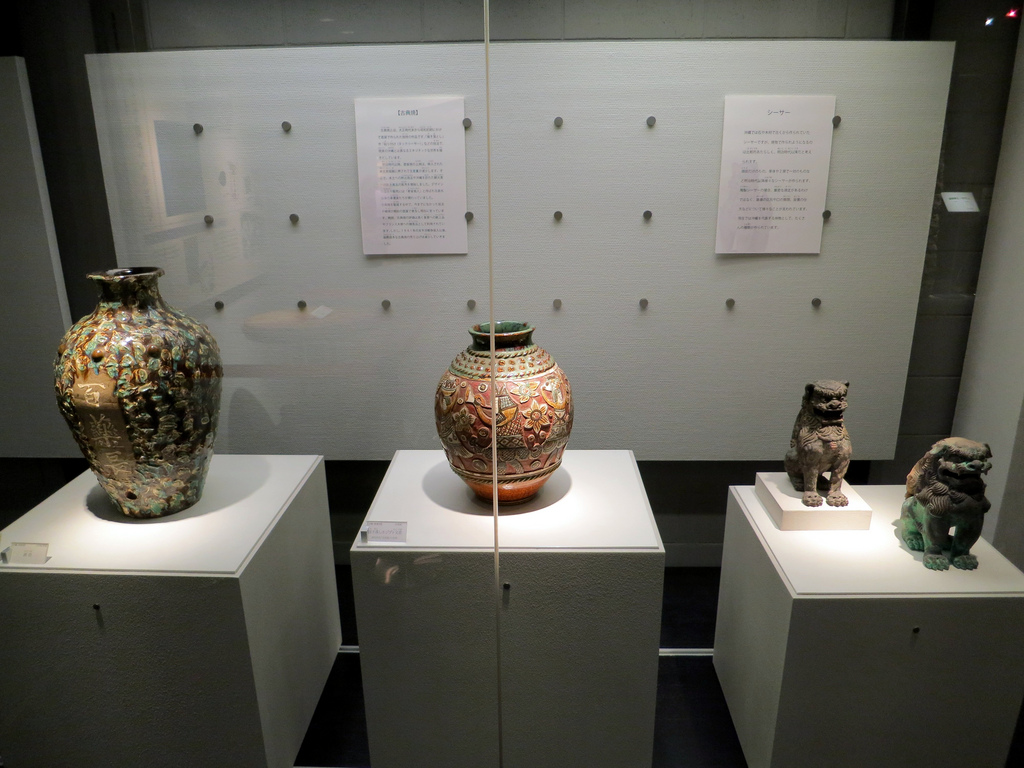If you are in the Tsuboya area of Naha, Okinawa and are interested in pottery, the Tsuboya Pottery Museum 那覇市立壺屋焼物博物館 is well worth a visit. It has several floors of well-organized displays of Okinawan pottery, and clearly shows the Chinese and Japanese influences on the classic forms. In Tsuboya, pottery is called “yachimun” in the Okinawan dialect.

Tsuboya Pottery Museum (photo: wikimedia.org/flickr)
There are two main styles of Tsuboya pottery, called ara-yachi and jo-yachi. Ara-yachi is a kind of Tsuboya that is unglazed, or coated with mud or maganese glaze, and then is fired at about 1120℃. Ara-yachi ware includes large items, such as storage jars for water, miso paste, or liquor, and small ones, such as masubin, a bottle for measuring awamori. Jo-yachi is another kind of Tsuboya that is glazed and baked at approximately 1200℃. Jo-yachi ware includes crockery for daily use, such as bowls, pots, plates, and teapots, as well as awamori containers, such as dachi-bin (hip flask) and karakara (awamori flagon), and vases.

Tsuboya Pottery Museum
But within these headings are a vast array of products from plates, cups, and vases for everyday use to large storage jars for water. The museum shows the development of pottery from early in Okinawan history to modern artists.

Tsuboya Pottery Museum
There is a good English audio guide to explain the exhibits. The Tsuboya Pottery Museum is open from Tuesday through Sunday from 10 am to 6 pm, and closed on Mondays. Admission is 315 yen for adults, 210 yen for university and high school students, and 105 yen for junior high students and younger. It is about a 12 minute walk from the ui monorail or 5 minutes from the nearest bus stop. Address is 1-9-32, Tsuboya,Naha-City, Okinawa Prefecture ,902-0065

Tsuboya Pottery Museum
For more information: http://www.edu.city.naha.okinawa.jp/tsuboya/j-top.htm
 photos by:
rapidtravelchai &
rapidtravelchai,
rapidtravelchai
photos by:
rapidtravelchai &
rapidtravelchai,
rapidtravelchai